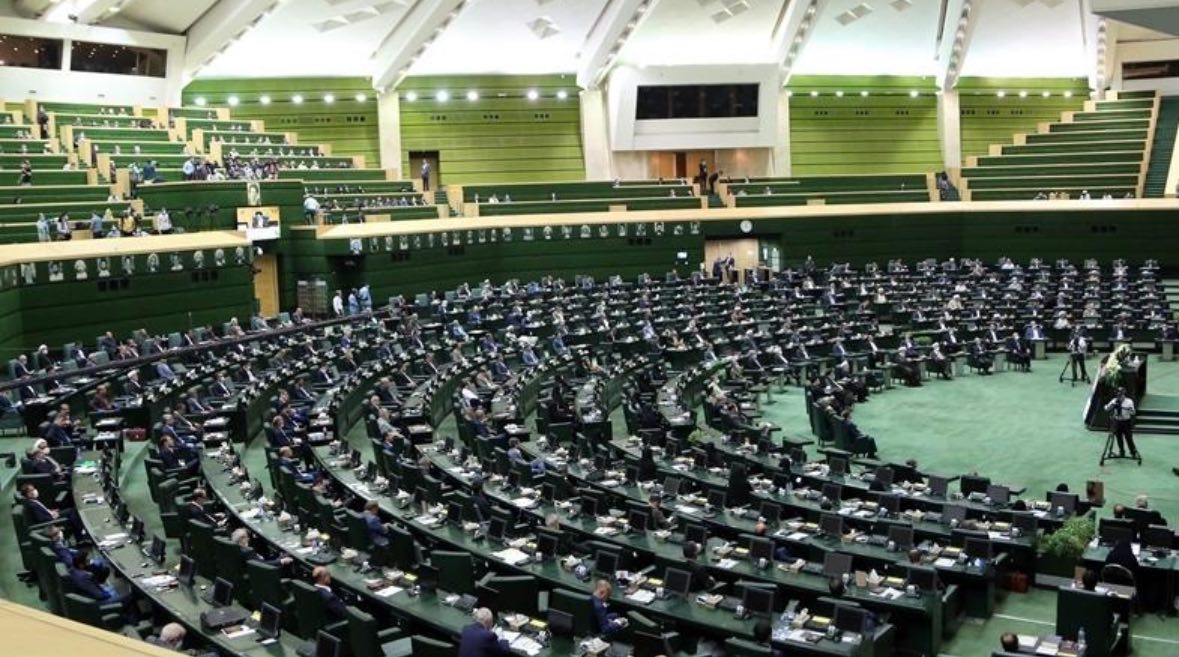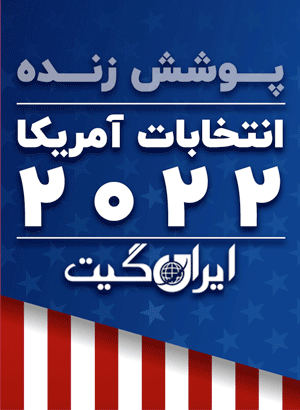Public participation or statist participation
Public participation or statist participation is an example of manipulation to deceive the public, claiming that statistics do not lie, but lies can be told with statistics. This is based on the strange statements of some government officials about the increase in voter participation in the elections for selecting members of the Islamic Consultative Assembly. It is suspected that the ruling authority’s intention to manipulate the numbers is firm.
For this reason, Iran Gate has addressed this issue. The twelfth parliamentary elections will be held in about three months under conditions where the government and the people are like two separate worlds following different paths. In this intensified polarized atmosphere, extensive electoral participation or significant attention is not observed, while the performance of the election executive bodies in disqualifying a large number of independent moderate and reformist candidates has also made the government’s intention to narrow down the channels of participation in electoral competitions evident.
Apparently, the Islamic Republic, under the leadership of Ali Khamenei, does not seem to have any tactical interest in utilizing the capacity of elections. On the other hand, it does not want the unified rule of the fundamentalists and the dominance of the factionalists to be challenged in the continuation of the purification process. On the other hand, reports from the society indicate that people, after experiencing the maximum and minimum capacities of elections for two decades, have decided to express their dissatisfaction through ineffective and decorative ballot boxes, due to structural obstruction and government exploitation, and efforts to display legitimacy.
Since 2017, the trend of protests in society has shifted towards revolutionary opposition and a tendency to move beyond the Islamic Republic as a whole. This trend started from the eleventh parliamentary elections, which recorded the lowest participation rate in the history of parliamentary elections. The chart below shows the trend of changes in the participation rate of parliamentary elections. This chart is based on official statistics and the actual figures, especially in the eleventh term, are lower.
The downward trend of participation in the 1400 presidential elections continued, and now, about 20 months after the 13th presidential election, the government of Ebrahim Raisi is preparing for its first election in its term. These elections are taking place after the women’s freedom protest movement, in a situation where the gap between the government and the people is at its deepest and most intense.
Although the government does not attach similar importance to the high rate of participation in elections as in the past, the current special political conditions in Iran and the disruptive nature of the current calmness are reasons that have made the government to some extent consider the impressive conduct of the elections important. In this context, the government and quasi-security media have been preparing for a long time, claiming that the significant decrease in election participation is due to the poor performance of the Hassan Rouhani government and that the government of Ebrahim Raisi has restored hope to the society.
As the election date approaches, it is predicted that these claims and special advertisements will intensify, while efforts will be made to encourage the government’s social base and floating voters to participate in the ballot boxes in any way possible.
The cliché of the foreign enemy conspiracy is still a focal point of the government, as always. For example, the Javan newspaper, affiliated with the Islamic Revolutionary Guard Corps, wrote that in the upcoming elections, the Iranian people see honesty, perseverance, jihadistic determination, and revolutionary approach in the government. The people are not intimidated by the enemy’s propaganda and psychological warfare, and they appreciate the statesmen and will be amazed, just like in previous eras.
Ahmad Khatami, the Friday prayer leader of Tehran, also claimed that the enemies want to turn the parliamentary elections into a referendum against the government. However, currently, indifference towards the elections is the prevailing attitude in the public opinion of civil society forces and critical and opposition political activists. Even most reformist and moderate activists did not nominate themselves in this period.
Now the question arises whether the claim of increased electoral participation after President Raisi’s presidency is merely rhetoric and slogan, and similar to previous elections, the acceptable threshold of 40% is introduced from the government’s perspective, or special measures are planned to increase the participation rate.
Given the prevailing political landscape in recent years and the further narrowing of the competitive space in the upcoming elections, it seems almost impossible to increase votes naturally and legitimately. Therefore, the government practically has only two options: accepting genuine participation with a low margin or manipulating the 50% threshold. The eligible voting population in the 1402 elections is approximately 60.6 million people.
This estimate is based on calculating the population statistics of Iranians aged 18 and above from the results of the 1395 census, subtracting the number of deaths from 1395 to 1401, and adding an estimate for the first 11 months of this year. The initial figures show that there are around 600,000 undecided voters, in which the percentage of government supporters is relatively lower. The institution of the Supreme Leader does not have an easy task of showcasing a grandiose election, but as always, it has resorted to some form of deception, which seems more apparent than before.
This year, the government decided, based on the summary of the Guardian Council from the previous elections, to conduct the registration of candidates in two stages. The first stage is the pre-registration stage, where candidates upload their documents, and after the initial formal evaluation by the Ministry of Interior officials, the final registration stage takes place. The purpose of this measure was to reduce the workload of the Guardian Council and its supervisory bodies by reducing the number of candidates. However, something else happened in practice.
Although the number of candidacies has increased since the ninth parliament, this time the principled conservatives launched an organized candidacy movement to formally increase the number of registered candidates and claim to set a record. In the pre-registration stage, 48,000 individuals registered, and in the final stage, slightly less than 25,000 individuals registered, which is the highest number in the entire history of parliamentary elections. The short-term goal of this action is to decrease the percentage of disqualifications, and the long-term goal is to utilize many candidates to increase the number of votes obtained.
The perception of skilled individuals is that by doing so, they can bring more people from outside the government’s social base to the scene, given the local competition among tribal and familial factions in medium and small cities and rural areas. However, this perception is based on superficial and rushed evaluations, and it is unlikely that this trick can lead to a significant change in the number of votes. Considering the high cost of election campaigns, those who do not have support, are not listed in government groups, or do not have social influence, give up or do not actively participate in election competitions.
Therefore, this scenario gains strength by creating an artificial wave of pre-registration by the government to demonstrate a competitive election and to manipulate the level of participation by applying a high coefficient, so that the announced participation rate differs significantly from the actual rate. There is a strong possibility that they will announce a number that is at least higher than the participation rate in the 1398 elections, with the aim of making the advertising claim about Rouhani’s better performance compared to Raisi in terms of the country’s future within the framework of government policies appear credible.
From the ninth period onwards, the conditions for candidacy became more difficult by requiring a postgraduate degree. As a result, there was a decrease in the number of candidates in the ninth period compared to the eighth period. This chart shows two indicators. First, the competitiveness of the elections, although the mathematical correlation coefficient between the number of registered candidates and the voter turnout is -40%, indicating that there is no strong linear relationship between these two variables. However, relatively in previous periods, when the election atmosphere was heated, there was a greater tendency to run for candidacy. This characteristic can be identified in the ratio of the number of registered candidates to the eligible population.
The high value of this indicator in the seventh, eighth, and eleventh parliaments, which were characterized by low-impact elections, reveals an abnormal situation and government interference to increase the apparent number of candidates. This trend has intensified in the twelfth period. However, it should be noted that part of the increase is also due to a new inclination in society to register as candidates.
Another index is the difference between the ratio of registered candidates to potential votes and the ratio of actual votes to candidates. A larger difference in these two indices indicates a decrease in competition levels in elections and a lack of widespread attention to elections in society from the fifth parliament onwards, when meaningful competition was created. The largest difference in the elections occurred in the eleventh parliament.
Among these, the first parliament is exceptional due to its founding characteristic. The credibility of the participation rate in the elections of the second, third, and fourth parliaments is also questionable, and their gaps are estimated to be relatively large compared to actual statistics. However, it is possible that during those periods, there were intense local and non-political competitions in medium and small cities of the country, which led to a relative increase in participation.
However, considering the sixth parliament, it can be concluded that in periods where political activism has expanded in society, the number of individuals who saw themselves as potential representatives in the parliament has also increased. Conversely, in situations where organizations, parties, and political groups have been active, the inclination for candidacy among professional political forces has become more apparent, while the desire of ordinary individuals without a history of continuous political activity to run for parliament has decreased, and the conditions have not been conducive to their success.
The statistics of the tenth and fifth parliaments shed light on this matter, indicating that despite the absence of a political atmosphere resulting from political activism, the electoral competition space was relatively heated for non-political reasons such as economic, cultural, social, and diplomatic factors. Therefore, the abnormal situation of the twelfth period is evident in this graph. Based on this, it is possible that a similar measure could be taken to reduce the gap between the registered candidates and potential votes, even if it means an increase in the number of null and blank votes, compared to the eleventh period, while visually presenting a higher number of candidates.


